As ocean temperatures rise, with scientists suggesting that 2022 was the hottest year on record for the ocean, prehistoric sites along Kenya’s low-lying coastal zone are under imminent threat. Among these sites is Jumba la Mtwana, located in Kilifi County. The foundation of this 14th-century treasure, designated as a national monument in 1982, has been exposed to flooding and erosion.
Jumba la Mtwana, also known as “The Large House of the Slave,” is a unique archaeological site situated north of the Mtwapa creek mouth, covering a 40-acre expanse of beachfront land that extends 300 meters (about 984.25 ft) inland in Kilifi.
What sets Jumba la Mtwana apart is its multifaceted significance. Beyond its archaeological importance, it serves as a vital nesting ground for endangered green turtles, including the hawksbill turtles, making it a secure refuge for these threatened species within the region.
Visitors to Jumba ruins are welcomed by the site’s water sources and adjacent woodlands, accompanied by the ocean breeze and sounds of birds. These unique features make Jumba la Mtwana a destination for those seeking to explore history and nature hand in hand.

However, this site, a testament to Kenya’s rich history, cultural heritage, and a sanctuary for a fragile ecosystem, is in desperate need of protection from the increasingly evident impacts of climate change, primarily driven by rising sea levels.
“The ruins are under constant threat from high tides, intensified storms, and erosion. What once proudly stood on solid ground now lies broken due to the relentless tides,” said William Mutasaka, the curator of Jumba la Mtwana, expressing the urgency of the situation.
“In recent years, we’ve witnessed days with storm surges and high tides, breaking down the ruins’ foundation,” he added, pointing at remnants of shattered walls.
A 2021 study published in the journal Handbook of Climate Change Management emphasises that the conditions of immovable cultural heritage sites in Kilifi are worsening, as evident through the proliferation of plant life, corrosion of metallic components, the emergence of cracks, the collapse of walls, the decay of wooden elements, the submergence of structures, and the peeling of wall surfaces – all exacerbated by extreme weather events.
Scientific Insights
These impacts of sea level rise are expected to become worse and more frequent. With the current El Niño climate pattern alert playing out this year, 2023 is predicted to be even hotter.
According to the a 2022 report by the World Meteorological Organization (WMO), the rate of sea level rise has surged twofold since 1993, with a nearly 10-millimeter increase noted since January 2020 alone.
Sandy coastlines, such as those found in coastal Kenya, are particularly susceptible to these changes. Loose sand, easily eroded by waves, is vanishing at an alarming rate. A comprehensive 2018 survey revealed that approximately a quarter of sandy coasts worldwide were already eroding due to climate change, with projections indicating a further deterioration of these vital natural barriers.
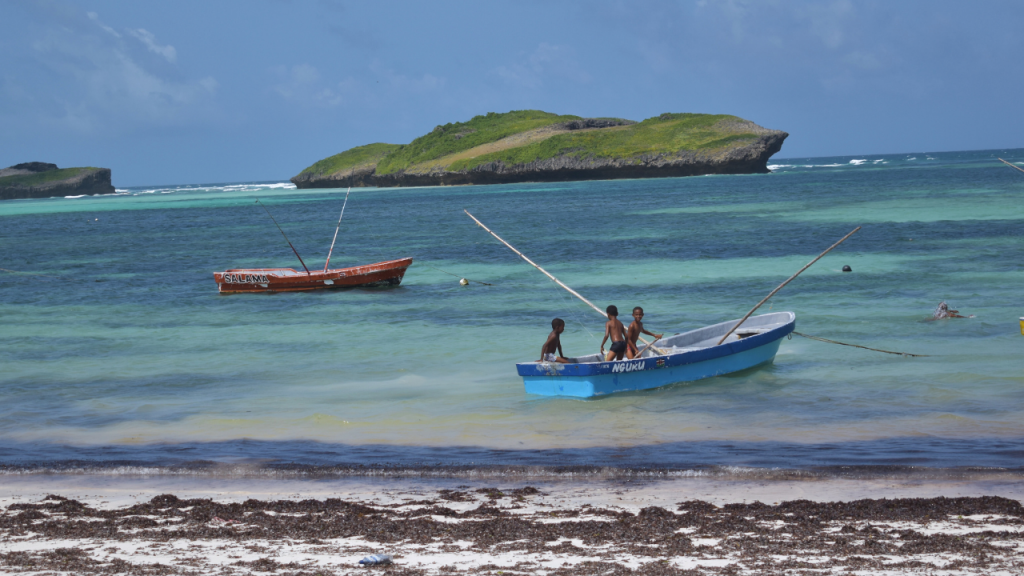
Dr. Amon Kimeli, a geological oceanographer at the Kenya Marine and Fisheries Research Institute (KMFRI), was clear about the data: “Global sea levels rise by about 3 millimeters annually, and this is expected to accelerate in the coming decades.’”
Dr. Kimeli, who leads efforts to measure ocean levels at Kilindini Harbour, said that they are recording a slightly higher annual increase of 3.1 millimeters.
“This isn’t just a statistic; it’s tangible. We now see almost twice as many high tide events compared to two decades ago,” he added.
These changes in global sea levels result from human-driven factors like greenhouse gas emissions.
The 2022 report from the Intergovernmental Panel on Climate Change (IPCC) highlights the urgency, stating that the global mean sea level (GMSL) is rising, and the rate at which it is rising is accelerating. By 2100, the report said that the GMSL could reach 0.84 meters.
“Undoubtedly, we can’t underestimate the cumulative effects of rising sea levels,” Dr. Kimeli said. “Rising waters cause more frequent flooding of coastal wetlands, risking their submersion. This threatens biodiversity and the vital ecosystem services for coastal communities.”
Kimeli added that the sea level rise intensifies coastal erosion, affecting settlements, historical sites, and human habitats.
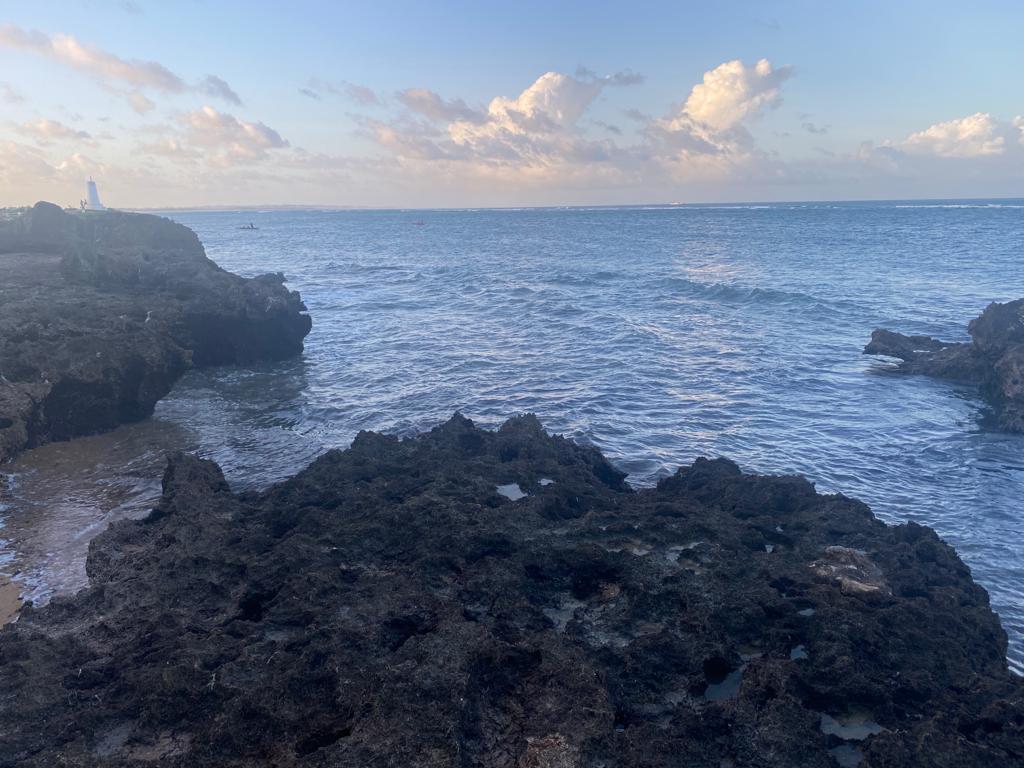
Dr. Rohit Jigyasu, Project Manager of Urban Heritage, Climate Change & Disaster Risk Management at The International Centre for the Study of the Preservation and Restoration of Cultural Property (ICCROM), highlights the intensifying impact of cyclones in Kenya’s coastal areas due to climate change.
“With rising sea temperatures and other climate-related factors, cyclones are becoming more powerful and frequent, significantly endangering coastal heritage sites,” he said. Jigyasu played a key role in the Climate Action and Disaster Risk Management for Cultural Heritage Sites project, a collaboration with the National Museum of Kenya (NMK).
While cyclones may not as frequently impact Kenya compared to regions like the South-West Indian Ocean tropical cyclone basin, the potential for damage can no longer be underestimated.
“The increased intensity of cyclones in coastal Kenya has brought formidable winds, heavy rainfall, and unpredictable fluctuations in humidity and temperature, directly affecting the structural integrity of historical buildings and the stability of archaeological sites,” Jigyasu said.
The Cultural History
At the National Museum of Kenya, Dr. Fredrick Kyalo Manthi, the Director of Antiquities, Sites, and Monuments, spoke of the imminent threats posed by climate change to Kenya’s coastal heritage.
“Our heritage, from dinosaur fossils to historical sites along Kenya’s coast, faces imminent threats from climate change,” he said.

“A nation that doesn’t have a history, I don’t think you could call ourselves a nation. We are a nation because we have a history, this heritage gives us identity as a nation,” Manthi noted, adding that climate change puts centuries of the nation’s history in jeopardy.
Adding a poignant perspective, Abdalla Ali Alausi, a retired National Museums of Kenya curator, said he feels a sense of impending loss when considering the Climate Change threats to Kenya’s historic sites on the coast.
“These sites,” Ali remarks, “constitute the very soul of our nation. They tell the story of our history and our journey. We cannot allow them to succumb to the relentless waves.”
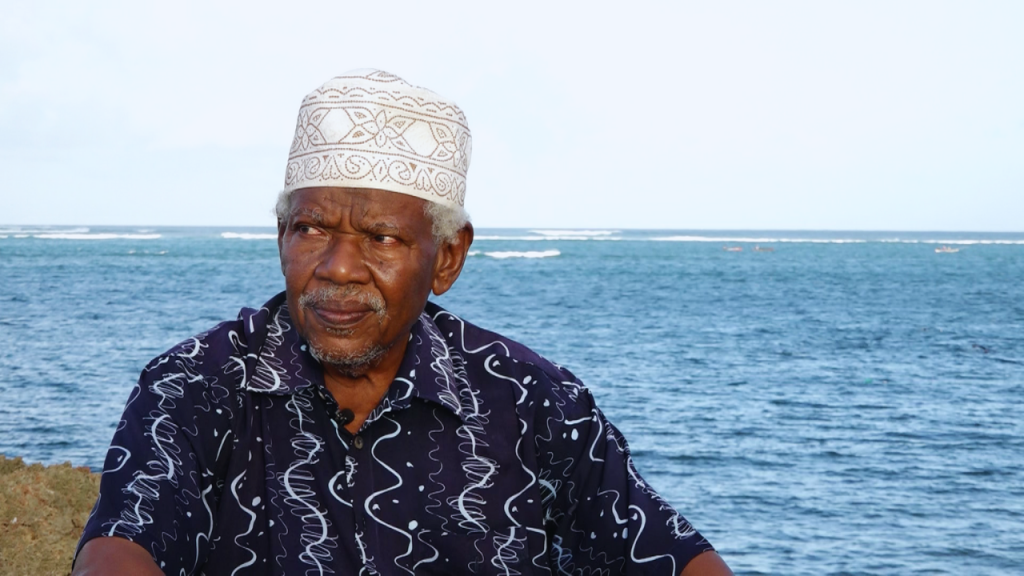
The impacts of climate change and rising sea levels aren’t limited to Jumba la Mtwana. Two other major pre-historical sites, the Vasco da Gama Pillar and the Gede Ruins, are also confronting similar challenges – and in the year 2020, the Pillar was almost lost to the sea.

In 1498, Vasco da Gama, the renowned Portuguese explorer, arrived in Malindi, a pivotal town in the Indian Ocean trade network. In gratitude for the sultan’s hospitality, da Gama erected a “padrão,” a monument showcasing a magnificent cross made of Portuguese limestone. This cross symbolized Portuguese maritime prowess and royal heritage.
Prior to the construction of a protective barrier, in 2021, rising sea levels had eroded the foundational layers beneath the Vasco da Gama Pillar. This erosion resulted in significant cracks, some as long as 10 meters, and an increase in salinity attributed to climate change. Consequently, the over 500-year-old pillar faced the imminent risk of collapse.
To address this, the government constructed a protective sea wall, preserving the iconic monument from potential disintegration into the Indian Ocean.
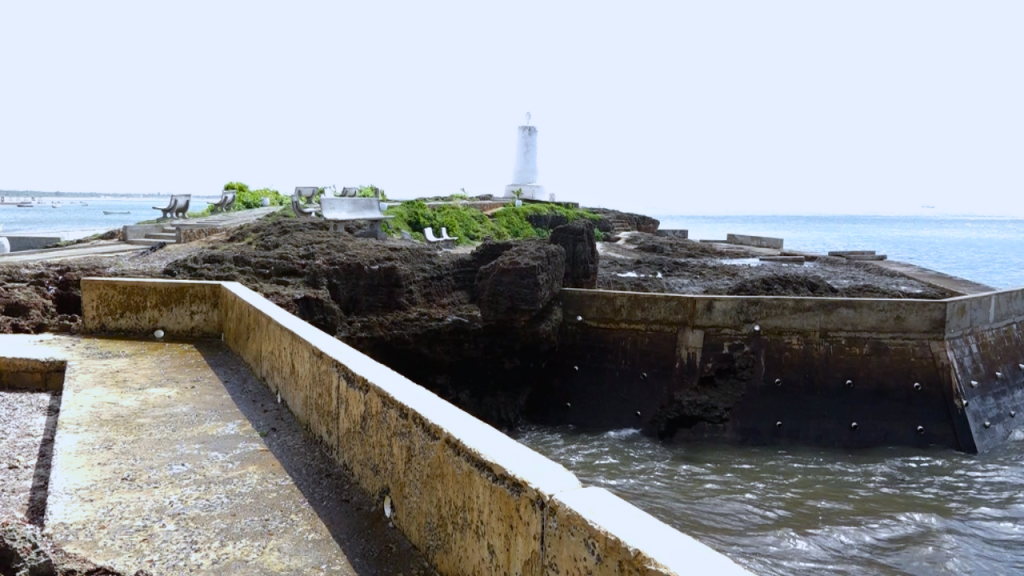
“The restoration of the Vasco Da Gama Pillar involved extensive efforts to underscore its paramount historical importance,” said Doris Kamuye, the curator overseeing the pillar’s conservation. “This included reinforcing sea walls and repairing the pillar.”
While the preservation effort was successful, Kamuye highlighted the ongoing need for preservation and restoration efforts at this heritage site.
The government of Kenya, through the office of the National Museums of Kenya, used Kes. 59 million to restore the monument, which symbolizes European exploration and trade in East Africa.
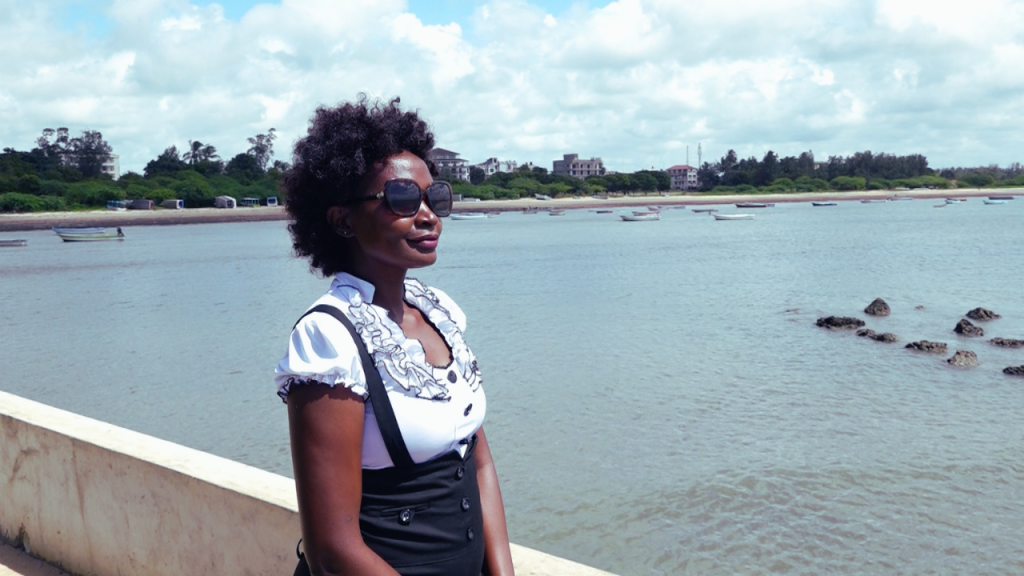
“The investment made by the government to renovate this Kilifi monument was not limited to Vasco da Gama alone; it forms an integral part of the broader Malindi tourist circuit,” Kamuye added.
The Malindi circuit encompasses other historically significant sites such as the Portuguese Chapel, Seafarers Monument, and the House of Columns.
“It’s vital to understand that Vasco da Gama Pillar represents just one chapter in the broader narrative of Kilifi’s historical treasures, all grappling with the imminent threat of rising sea levels,” Abdalla Ali said, mentioning other historical sites in the county, including Gede ruins.
The Gede ruins boast a lineage dating back to the 12th century, yet much like Vasco da Gama and Jumba la Mtwana, Gede now grapples with the relentless erosion driven by the encroaching sea.

“It’s an indispensable site,” Ali said.
In an interview with Kass Media, an Italian tourist Andrea Marga said, “My interest in Vasco da Gama monument stems from childhood readings about explorers like Vasco da Gama, James Cook, and Magellan. Seeing the monument in person has been an emotional experience, as it symbolizes an important part of history.”
The Economic Impact

As highlighted by tourists like Marga, heritage sites not only contribute to cultural education but also serve as bustling hubs of trade and exploration. Their significance extends far beyond archaeology; they are the lifeblood of the local economy.
“The heritage sites are not only valuable for their historical significance but also serve as essential assets for tourism,” said Dr. Manthi. “These sites attract visitors from both local and international destinations, contributing significantly to the local economy.”
Manthi said that the revenue generated from tourism supports the livelihoods of the local community, including businesses and individuals who rely on the influx of tourists.
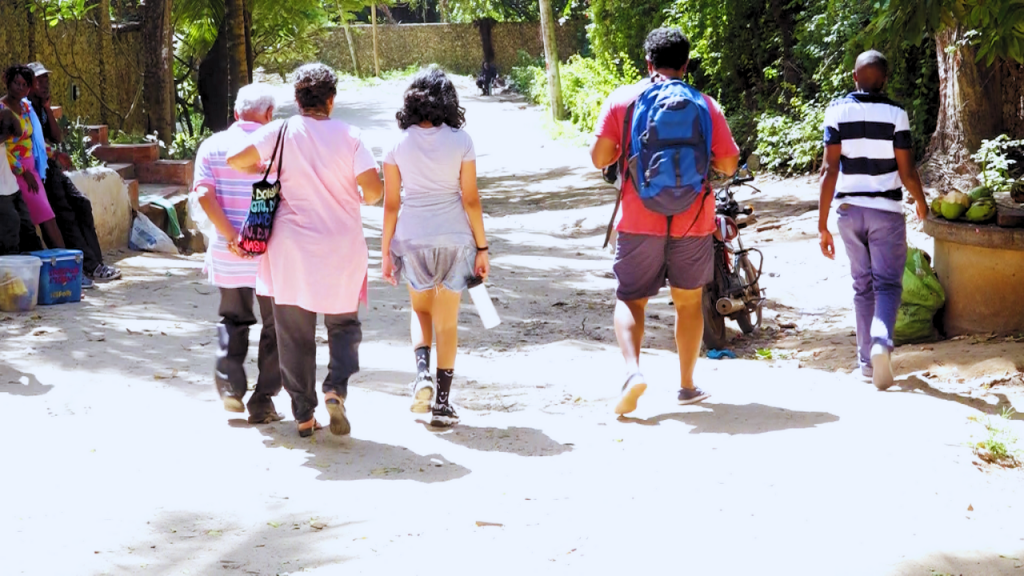
“In the peak season, the pillar welcomes over a thousand visitors per day,” says Doris Kamuye, the curator of Vasco da Gama Pillar. Locals pay 100 shillings each for adults and 50 shillings each for children, while foreign visitors pay 500 and 250 shillings respectively. The Kenyan government has introduced online ticketing, streamlining visits for both Kenyan and international tourists.
Visitors to these sites include students on school trips and couples and individuals, both local and foreigners, visiting the shoreline and ruins.
Another group also play a pivotal role in this atmosphere: Vendors, both local and international, exhibit traditional attire, jewelry, and crafts, offering a slice of Kenyan culture to intrigued visitors.
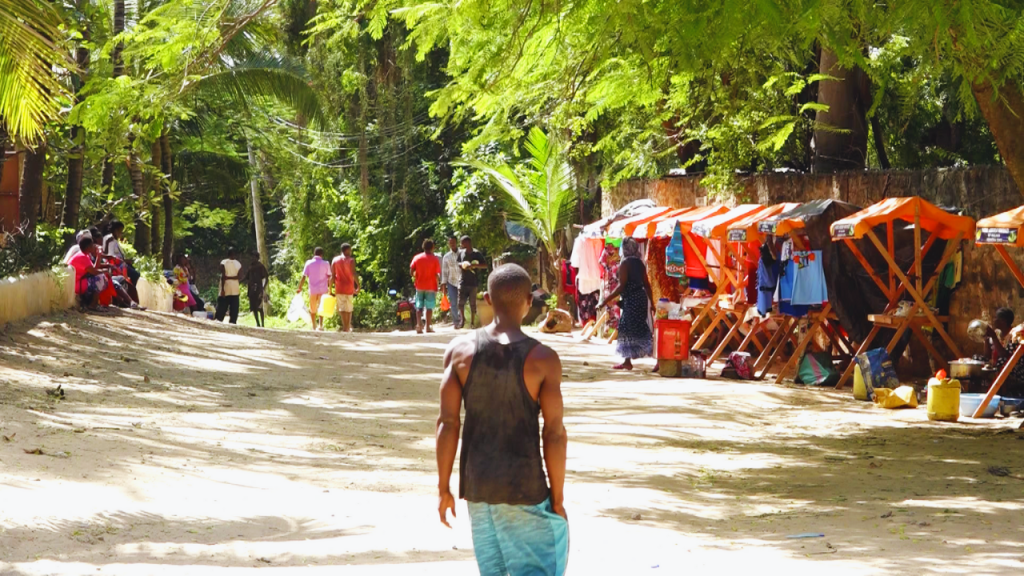
Pikolo Mlazo, a local motorcyclist taxi and tour guide, finds the most work during the high tourism season from August to December.
“Tourists relish my motorcycle-led tours because I can effortlessly navigate through traffic and provide them with seamless exploration,” Mlazo said.
Martha Nyamai, the chairlady of Vasco da Gama Curios Market, relies on this historic pillar for her livelihood. The steady stream of tourists enables her to offer a variety of traditional attire, including lesos, beads, and garments.
She also emphasized that she and her fellow vendors share a symbiotic relationship with the survival of Vasco da Gama. Within the group of 76 members, their seasonal business relies on tourists who come to visit the Vasco da Gama Pillar.
“We have formed a close-knit support ‘chama’ network,” said Nyamai. “In this network, we pool our resources to navigate through lean seasons when visitors are scarce.”
Ahmed Jibril Shurie, a staff member at the National Museums of Kenya who is based at the Vasco da Gama Pillar site, said that the restoration efforts, including the construction of a sea wall, have not only addressed safety concerns raised by the significant crack caused by ocean waves but have also paved the way for an enhanced and secure visitor experience.
“Visitors now explore Vasco da Gama with confidence, thanks to the site’s stable ground post-renovation. The experience is more enjoyable, as history comes to life against the backdrop of this iconic monument,” Shurie said.
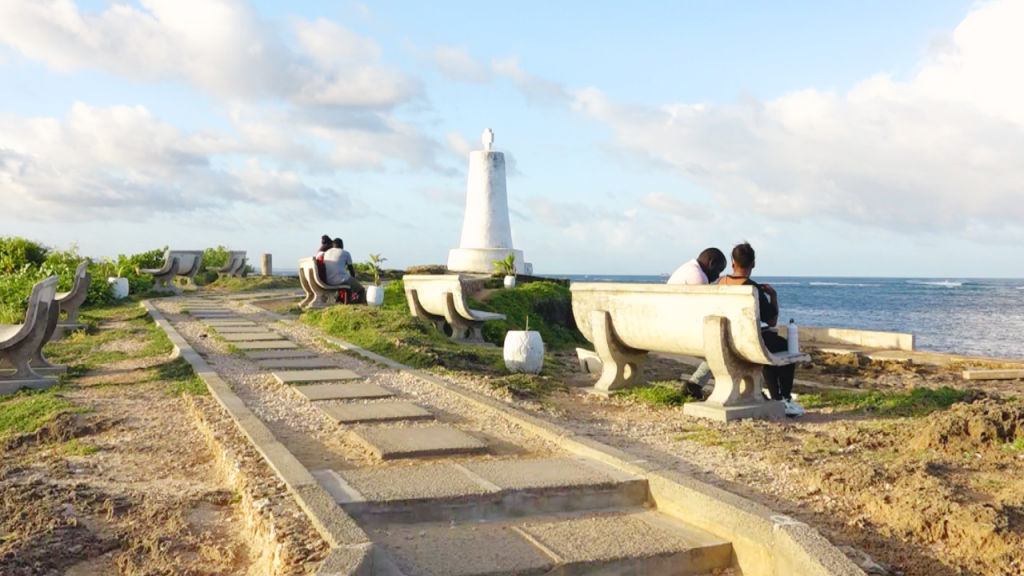
Yet, a different narrative unfolds at Jumba la Mtwana. Deteriorating conditions hamper business. While there are visitors, there’s no bustling atmosphere.
“The relentless encroachment of the ocean leaves little room for these cherished memories,” said Mutasaka, the curator of Jumba ruins. “Honestly, we are happy to receive even a dozen visitors a day.”
Kenya has experienced a notable resurgence in its tourism sector after overcoming the challenges posed by the COVID-19 pandemic.
Government-released data reveals that earnings from the sector surged to over $2.1 billion last year, marking a significant increase from the $1.16 billion recorded in 2021 when the pandemic stifled international travel.
The influx of international tourists saw a remarkable increase, surpassing 1.4 million compared to the 870,000 recorded in 2021. This surge in numbers was diverse in origin, with approximately 16% of visitors coming from the United States, 12% from Uganda, and 10% from the United Kingdom.
Earnings from international arrivals in Kenya amounted to 268.1 billion Kenyan shillings (Kes), approximately US$1.8 billion, in 2022, representing an 83% increase compared to the previous year.
Despite these promising tourism figures, climate adaptation measures have yet to find their place in cultural management plans.
The National Museums of Kenya (NMK) have cited a shortage of finance and skilled archaeologists as an obstacle to integration.
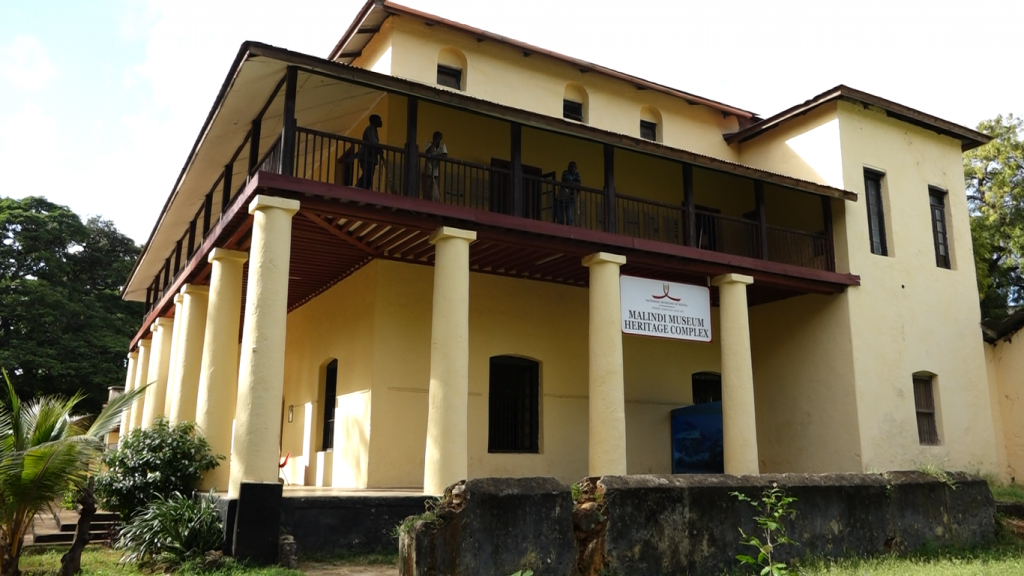
Despite receiving government money allocations, NMK remains underfunded for the conservation of these invaluable sites and monuments, and primarily allocates its limited resources to staff salaries out of necessity.
Impact on Biodiversity
Jumba la Mtwana, beyond its archaeological significance, serves as a critical nesting ground for endangered green turtles.
Curator William Mutasaka, standing along the shores of the coastal settlement, pointed to the high tide mark, now just a few steps away from the ruins.
“Green turtles typically nest above this high tide mark. However, rising sea levels have encroached upon their nesting grounds,” Mutasaka noted, expressing concern about the diminishing space available for egg-laying as sea levels continue to rise.
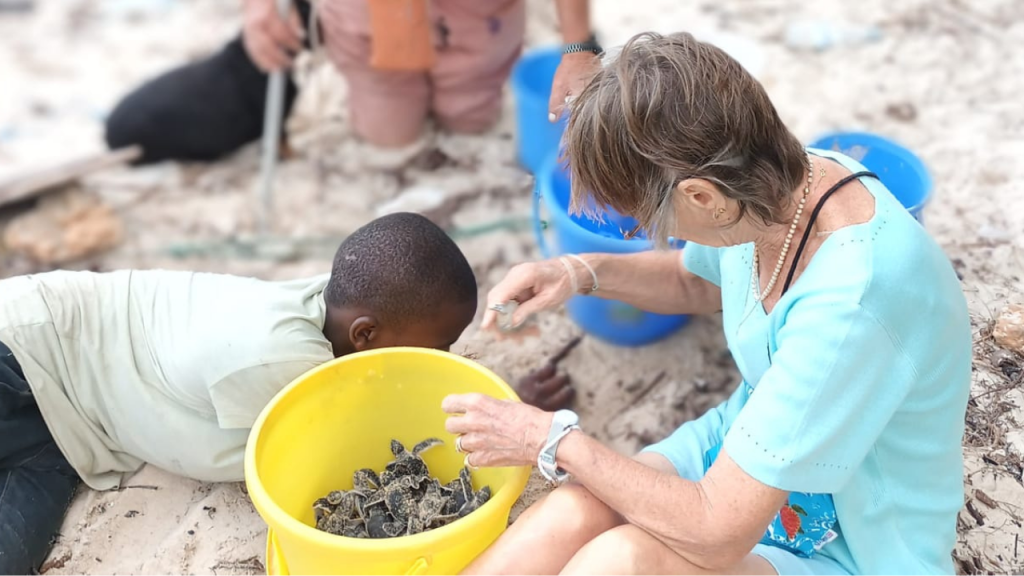
Dr. Mohammed Omar, a research scientist at the Wildlife Research and Training Institute (WRTI), emphasized the importance of allowing shorelines to adapt naturally to rising sea levels.
He cautioned against sea wall construction in the area, pointing out the repercussions:
“In physics, every action has an equal and opposite reaction,” he explains. “These walls force water to hit hard surfaces, resulting in significant erosion, leading to the gradual disappearance of our beaches.”
“By obstructing the [turtles’] access to nesting grounds, these walls disrupt the natural breeding cycles of these species, imperilling their existence,” he added.
“We need to protect these nesting beaches,” Dr. Omar insists, underscoring the urgency to enforce measures to preserve critical habitats. “Government intervention is crucial to safeguard these areas and ensure the continued survival of these species.”
Omar mentioned global initiatives like the 30 by 30 agenda, a plan to conserve 30% of Earth’s land and sea areas by 2030, and the commitment to conserve 100% of marine environments for sustainability as important factors in this issue. He stressed the necessity for comprehensive regulations governing coastal development to ensure the long-term sustainability of these fragile environments.
Shedding light on the structural and managerial strategies used to preserve heritage sites in the region – many employed by communities themselves – becomes imperative in this context.
Community’s Innovative Approach to Conservation
One independent coastal conservation group is taking proactive steps to protect its heritage and build resilience against climate change. Led by a dedicated group of young men of Sabaki River Independent Conservation Group, under the banner of Camp Gedeng, they have embarked on a unique mission to safeguard the fragile shorelines. They are the stewards of the Sabaki Dunes, a critical Kilifi feature.
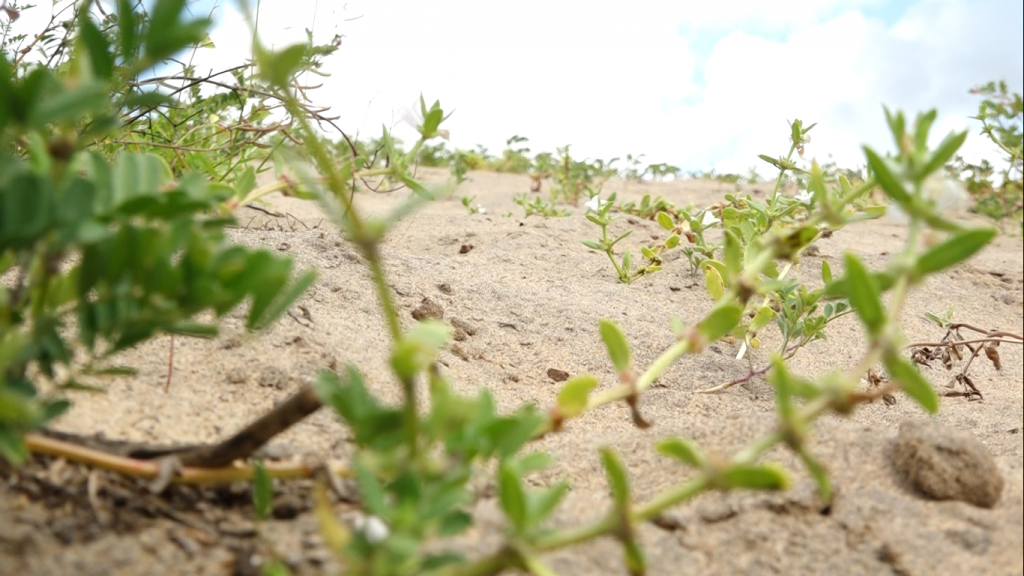
Coastal dunes are mounds of sand near the beach, and along with their associated natural grassland communities, they form a crucial natural defense against flooding and erosion. The estuary, estimated to cover 250 hectares of land in Kilifi County, is predominantly surrounded by coastal dunes.
Paul Gacheru, the Species and Sites Program Manager at Nature Kenya, explains that the formation of the Sabaki dunes is sustained by the process of sand deposition. This deposition, in turn, has led to the creation of new land areas in Kilifi County.
“The alteration in the Sabaki River’s course, influenced by factors such as changing water levels and climate change, has resulted in the accumulation of sand, transforming what was once underwater into solid land,” Gacheru said, adding that this illustrates the dynamic nature of coastal regions, where natural forces and human interventions are closely connected.
He said that the spatial and temporal trends in sedimentation in the Sabaki Estuary indicate the high dynamics within the current human-dominated landscape. “Over time, more sandbanks develop, leading to the consequent growth of wetlands due to the increased flow of sediments into the estuaries each year. These changes could be attributed to fluctuations in water volumes,” he explained.
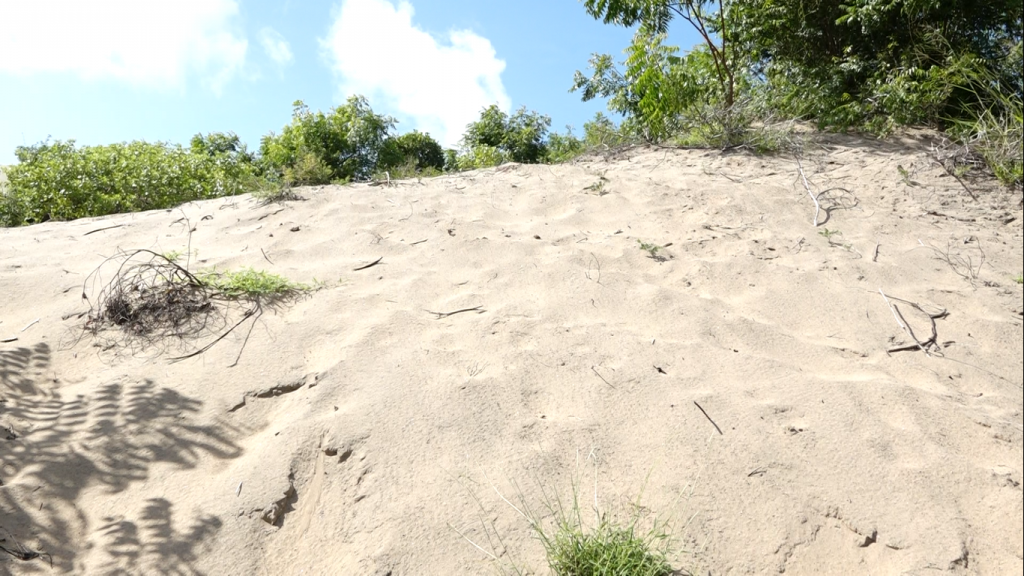
According to a report by the Journal of Great Lakes Research, these dunes act as protective sand barriers that shield the land from the sea’s encroachment. Disruption of these dunes can result in beach damage and the loss of their protective function.
“Dunes provide freshwater sources, support biodiversity, and act as natural protection features. We need to preserve them,” said Dr. Omar.
Like many other exploitative human-environment interactions in the coastal region, illegal sand harvesting is exerting increasing pressure on the Kilifi County Dunes.
The considerable threat to the dunes limits their ability to serve as a buffer, which is the first natural line of defense against flooding and coastal erosion. It also weakens their capacity to protect structures and buildings along the coast, like historic sites, leaving these areas vulnerable.
Gacheru said erosion is evident in areas where excessive sand harvesting has occurred because the water has advanced closer to the community.
“This should be a cause for concern in this low-lying coastal community,” Gacheru emphasized, “as it heightens their exposure and vulnerability due to human-induced degradation.”
He added that if this natural balance isn’t maintained, there is a growing concern that the shoreline will gradually erode, resulting in the total loss of the coastal protection these dunes provide for both communities and the historic sites.
To combat these threats, retired military man Kene Kiplagat is spearheading a transformative conservation initiative that leverages tourism as a powerful tool. Kene, the Chairman of Camp Gedeng, has rallied local youth to act as stewards of the land, offering visitors a unique experience in the Sabaki forests.
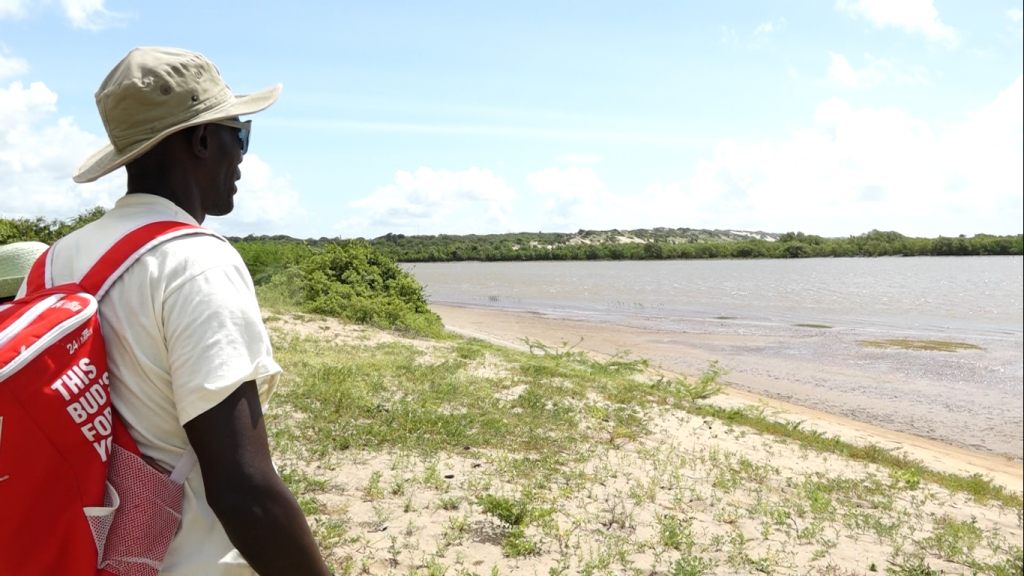
“We believe in the synergy between tourism and conservation. Our local youth, serving as tour guides, play a pivotal role in showcasing the beauty of the Sabaki forests. It’s not just about sightseeing; it’s about hands-on conservation,” Kiplagat said, noting that visitors are actively encouraged to contribute to the preservation efforts by planting trees along the shoreline.
“The strategic tree and vegetation planting stands as a crucial measure in stabilizing the dunes and curbing erosion,” said Kene. They plant wax mallow,
giant fish tail palm, and mangroves.
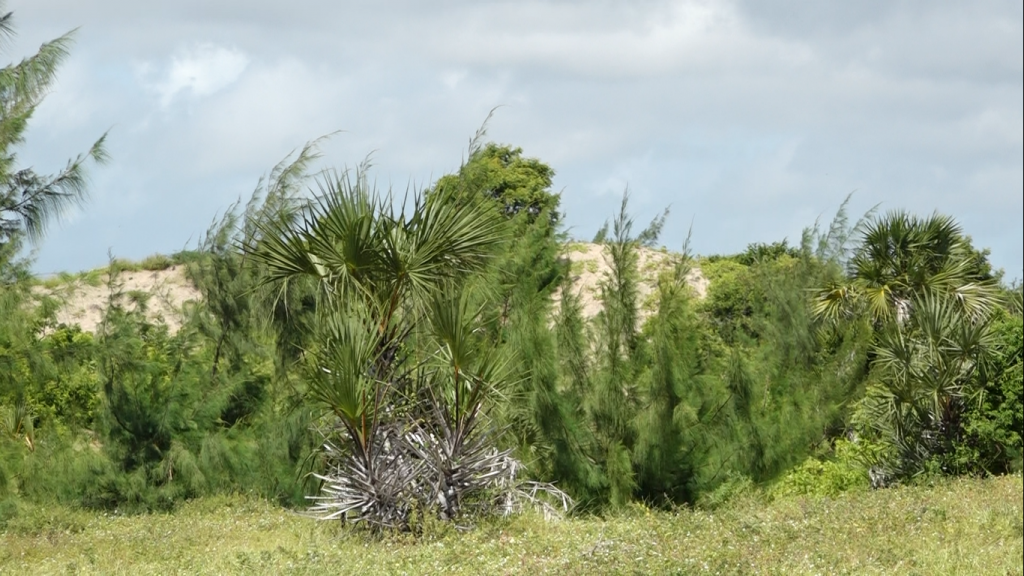
“Planting these trees around coastal dunes serves a dual purpose: it restricts movement on the dunes, while the enveloping vegetation stabilizes them, forming an initial line of defense against coastal challenges, especially during high tides,” Kene said.
Several youth from the Giriama community are reaping tangible benefits from this unique innovative approach.
Fifteen-year-old Peter Mataza, a student by day and a fisherman and tour guide during holidays, expressed his enthusiasm: “We love protecting this environment because when guests come for a visit, I show them around, they enjoy the bird’s view from atop the mountains, and at the end of the day, they are happy, leaving me a tip. I also enjoy it.”
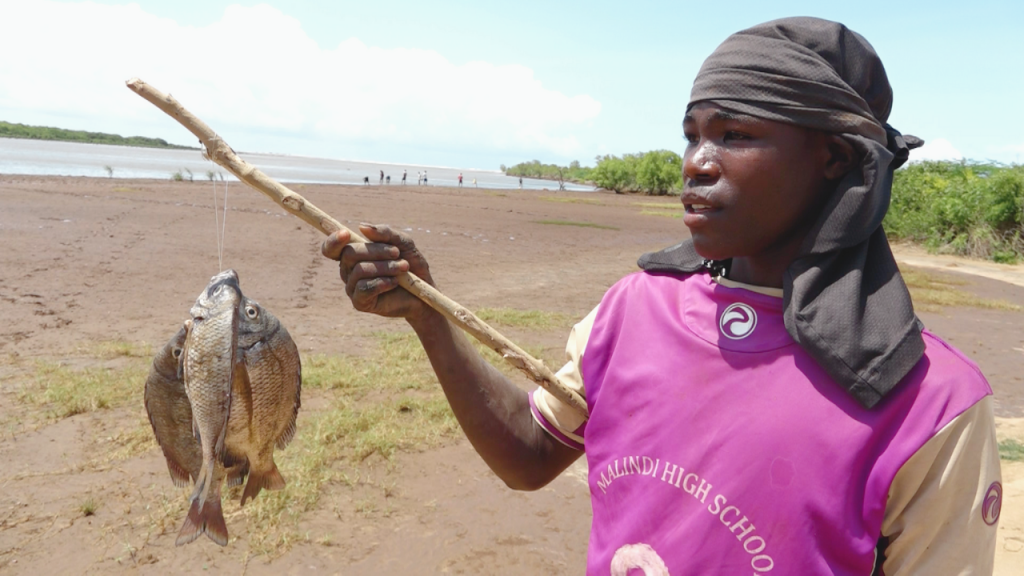
“When there’s vegetation by the shoreline, sometimes the fish come in plenty, and I even catch octopus. It’s good food for me and my family, and it sells well in the market. That’s why I encourage my friends to protect nature because it gives us good returns,” Mataza added.
Kene said that by actively participating in conservation, they not only earn income but also foster a deep sense of ownership and responsibility for our environment.
“We want the community to see the land, once deemed as wasted, as a valuable asset,” he said, noting that tourism becomes a catalyst for community engagement and environmental protection.
“When local communities directly benefit from tourism, they become the frontline defenders of our natural heritage. It’s a symbiotic relationship — the land thrives, and so does the community,” Kene said.
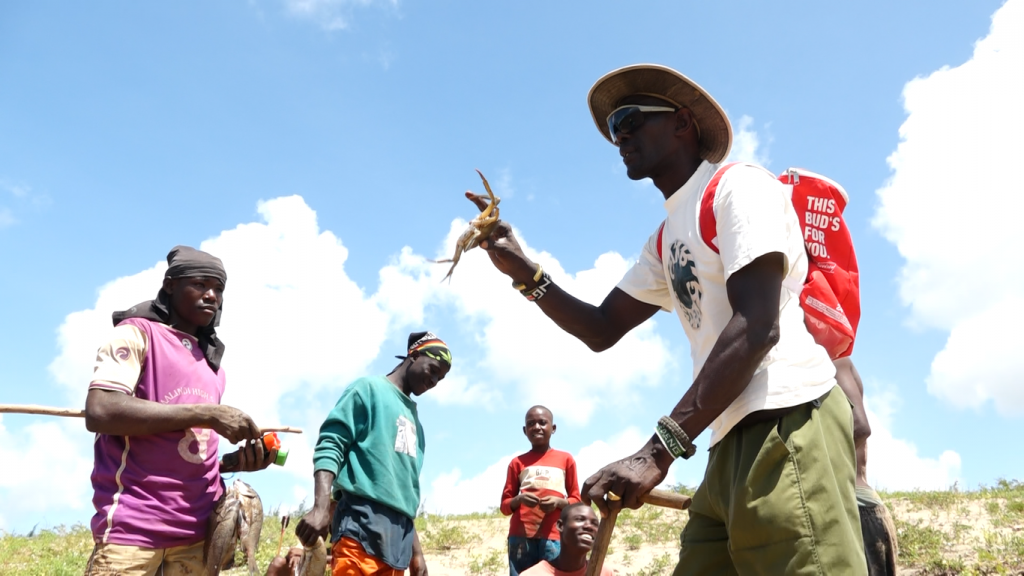
Kene and his team remain vigilant, patrolling the dune areas to deter illegal activities. “We are the informal guardians of these dunes,” he affirmed. “With the full support and authorization of the government through the Kenya Wildlife Service, we ensure the integrity of this ecosystem is preserved.”
Nature as Part of Solution
Dr. Amon Kimeli, a physical oceanographer at Kemfri, emphasizes the critical role coastal dunes play as a natural buffer, protecting historical sites along the Kilifi shoreline.
“By curbing excessive sand harvesting and preserving the natural balance, these dunes act as a barrier, absorbing and dispersing the energy from waves, storms, and wind, thereby lessening their direct impact on the adjacent land,” said Kimeli. “This preservation significantly contributes to maintaining the coastline’s integrity.”
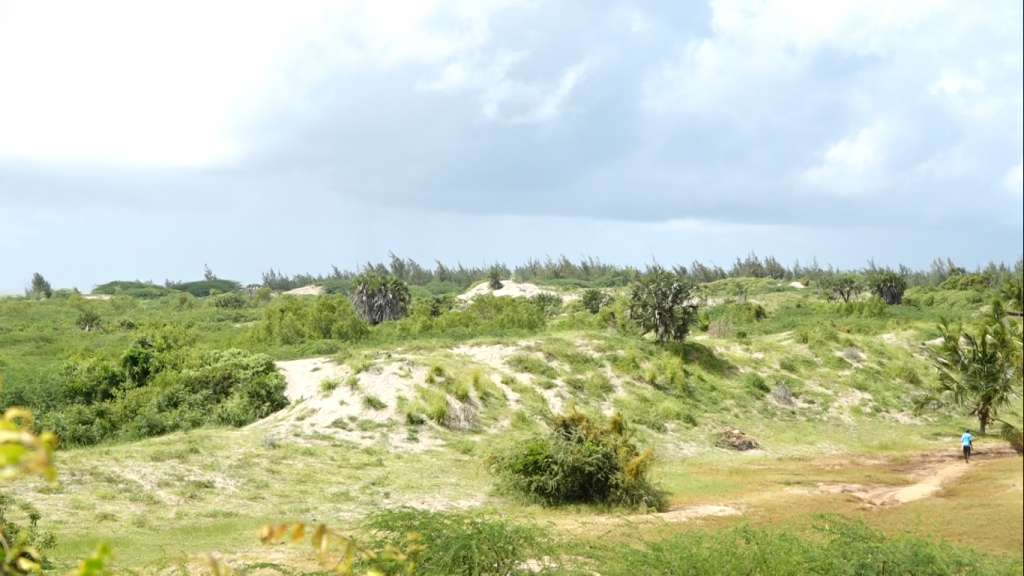
Paul Gacheru adds another perspective, noting that uncontrolled sand harvesting exacerbates erosion, impacting not only immediate areas but also diminishing the protective ecosystem services provided by these dunes, such as shielding against storm surges.
“Community-driven initiatives within Sabaki estuary are commendable, as unregulated sand harvesting poses a threat, undermining the effectiveness of dunes in providing essential ecosystem services,” he said.
While coastal dunes alone cannot single-handedly resolve the crisis of rising sea levels, they undeniably stand as integral components in the discourse surrounding nature-based coastal protection strategies, especially along Kilifi’s sandy coastline.
A critical aspect emerging from this discussion is the necessity of financial support. William Mutasaka, the curator of Jumba la Mtwana, said, “With climate finance, we can efficiently deploy the innovative, technical and strategic support needed to protect our shoreline.”
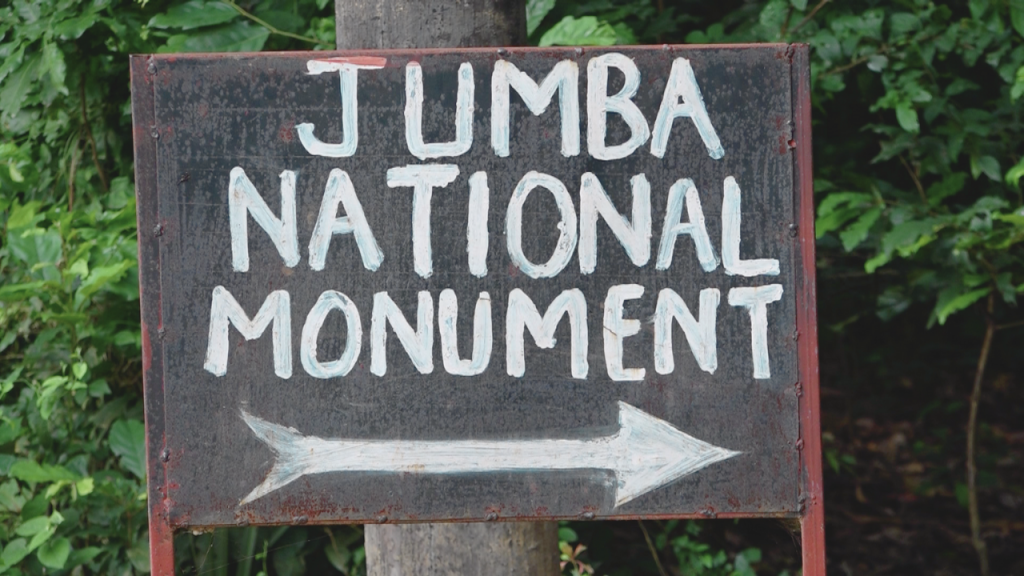
Mutasaka said the precarious state of the ruins, teetering on the brink of collapse, is primarily due to a lack of financial resources, adding that, “the mitigation and adaptation measures required to preserve Jumba la Mtwana demand financial investment.”
This call for financial backing resonates on a broader stage.
At the Africa Climate Summit 2023, where leaders from across the continent gathered to deliberate on Africa’s contributions, President William Ruto declared, “The preservation of vital natural resources is paramount for our nations.”
He noted that the transition to a greener economy requires resources and urged developed nations to honor their pledges and fully implement all COP27 decisions regarding the Climate Loss and Damage Fund.

Setting the tone for African nations as they approach COP28, Ruto emphasised that the challenges posed by climate change demand a global response, emphasising the crucial need for concerted efforts to protect both cultural legacies and the environment.
The experts contributing to this report consistently underscore the global nature of the challenges posed by climate change. Their unified message highlights the urgency of integrated efforts and collaborative endeavours to safeguard heritage sites and the environment.
“The battle to protect Kilifi County’s heritage is, at its core, a battle to preserve our collective history against the relentless forces of climate change,” Dr. Manthi aptly noted.
This story was produced with support from Internews’ Earth Journalism Network.





